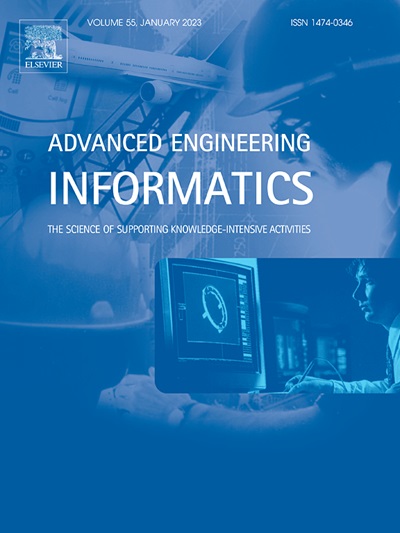增强损伤识别的保形GNN混合数据物理框架
IF 9.9
1区 工程技术
Q1 COMPUTER SCIENCE, ARTIFICIAL INTELLIGENCE
引用次数: 0
摘要
结构损伤识别对于确保安全至关重要,但现有的数据驱动和基于物理的方法往往存在准确性和计算局限性。为了解决这些问题,我们提出了一个混合框架,将图神经网络(gnn)与基于物理的有限元(FE)模型更新方法相结合。第一个模块使用经过有限元模拟模态数据训练的GNN来估计结构损伤的位置和严重程度,并使用进化AutoML框架优化GNN的架构和超参数。在第二个模块中,保形预测技术量化了GNN预测中的不确定性,确保了损伤估计的稳健置信范围。这些不确定性感知预测初始化了热启动FE模型更新工作流,其中Water Strider算法(WSA)有效地最小化了基于有限模态数据的成本函数。所提出的方法已在包括路易斯维尔大桥、IASC-ASCE建筑和圆顶结构在内的基准结构上得到验证,表明与传统方法相比,损伤识别精度显着提高。与纯数据驱动和基于物理的方法不同,这种混合框架在整合不确定性量化的同时利用了它们的优势,提高了它们的效率。这种混合方法可扩展到各种结构配置,使其成为增强结构健康监测的有前途的解决方案。本文章由计算机程序翻译,如有差异,请以英文原文为准。
A hybrid data-physics framework with conformal GNN for enhanced damage identification
Structural damage identification is crucial for ensuring safety, yet existing data-driven and physics-based methods often suffer from accuracy and computational limitations. To address these issues, we propose a hybrid framework that integrates Graph Neural Networks (GNNs) with a physics-based Finite Element (FE) model updating approach. The first module employs a GNN trained on modal data from FE simulations to estimate the location and severity of structural damage, with an evolutionary AutoML framework optimizing the GNN’s architecture and hyperparameters. In the second module, a conformal prediction technique quantifies uncertainty in the GNN’s predictions, ensuring robust confidence bounds for damage estimations. These uncertainty-aware predictions initialize a warm-started FE model updating workflow, where the Water Strider Algorithm (WSA) efficiently minimizes a cost function based on limited modal data. The proposed methodology has been validated on benchmark structures, including the Louisville bridge, IASC-ASCE building and a dome structure, demonstrating a remarkable increase in damage identification accuracy compared to conventional approaches. Unlike pure data-driven and physics-based methods, this hybrid framework leverages their strengths while integrating uncertainty quantification, enhancing their efficiency. This hybrid approach is scalable to various structural configurations, making it a promising solution for enhanced structural health monitoring.
求助全文
通过发布文献求助,成功后即可免费获取论文全文。
去求助
来源期刊

Advanced Engineering Informatics
工程技术-工程:综合
CiteScore
12.40
自引率
18.20%
发文量
292
审稿时长
45 days
期刊介绍:
Advanced Engineering Informatics is an international Journal that solicits research papers with an emphasis on 'knowledge' and 'engineering applications'. The Journal seeks original papers that report progress in applying methods of engineering informatics. These papers should have engineering relevance and help provide a scientific base for more reliable, spontaneous, and creative engineering decision-making. Additionally, papers should demonstrate the science of supporting knowledge-intensive engineering tasks and validate the generality, power, and scalability of new methods through rigorous evaluation, preferably both qualitatively and quantitatively. Abstracting and indexing for Advanced Engineering Informatics include Science Citation Index Expanded, Scopus and INSPEC.
 求助内容:
求助内容: 应助结果提醒方式:
应助结果提醒方式:


